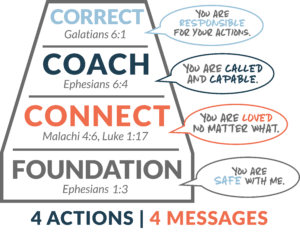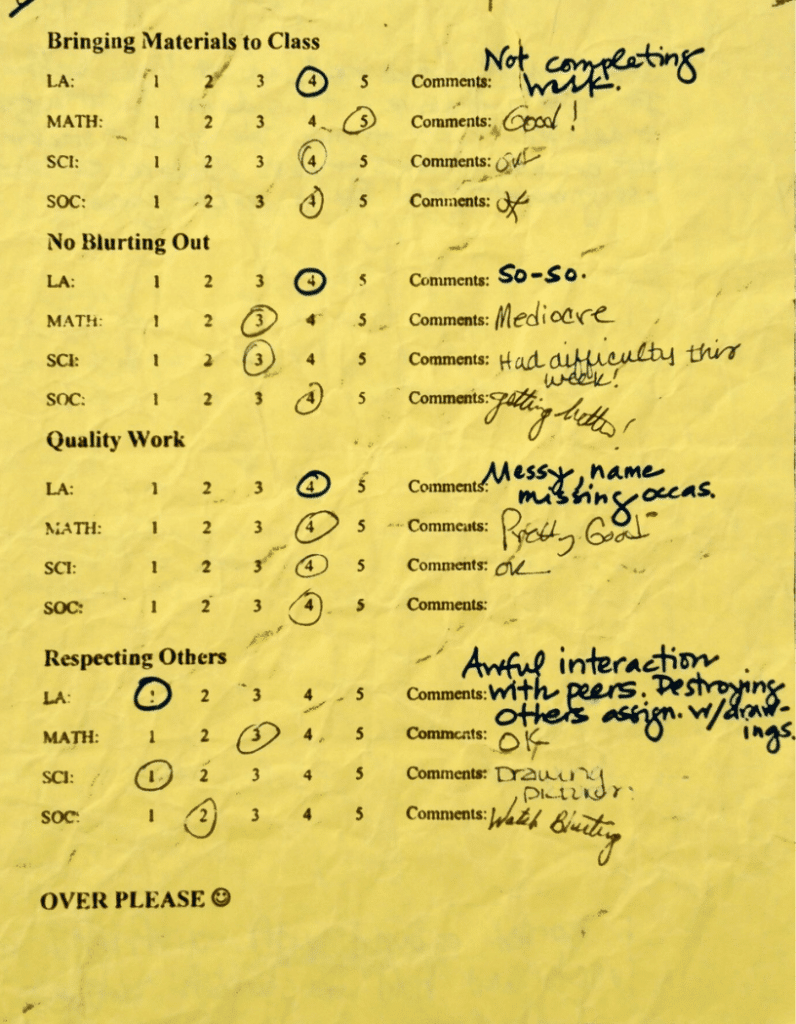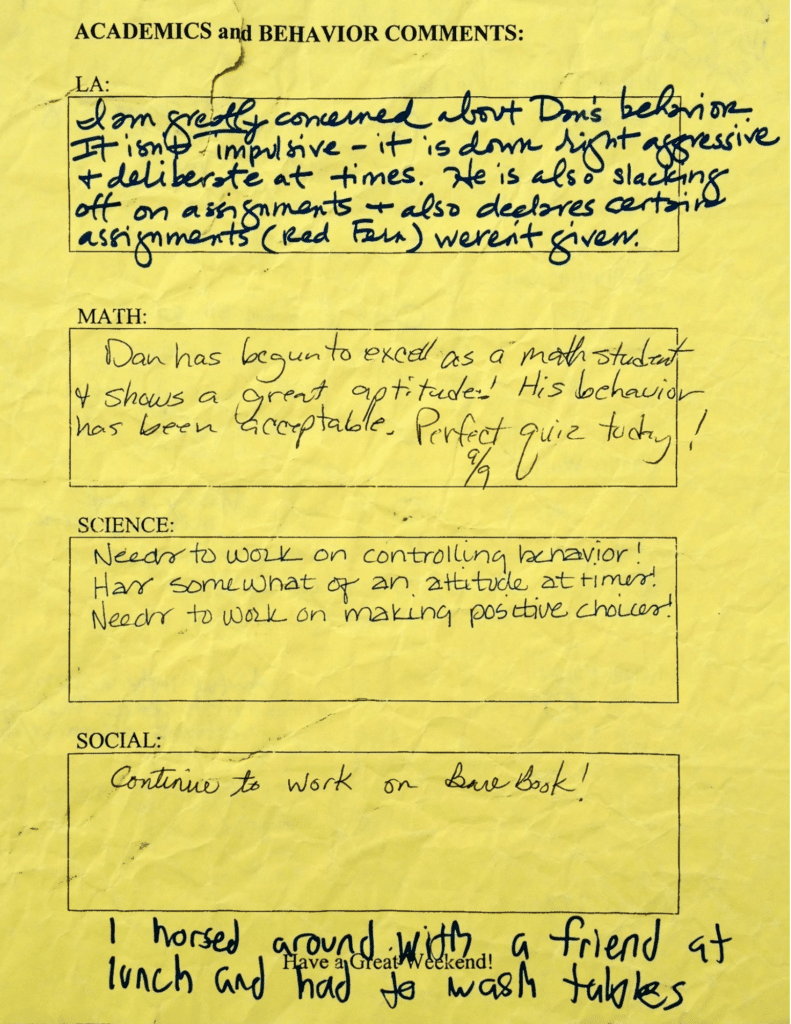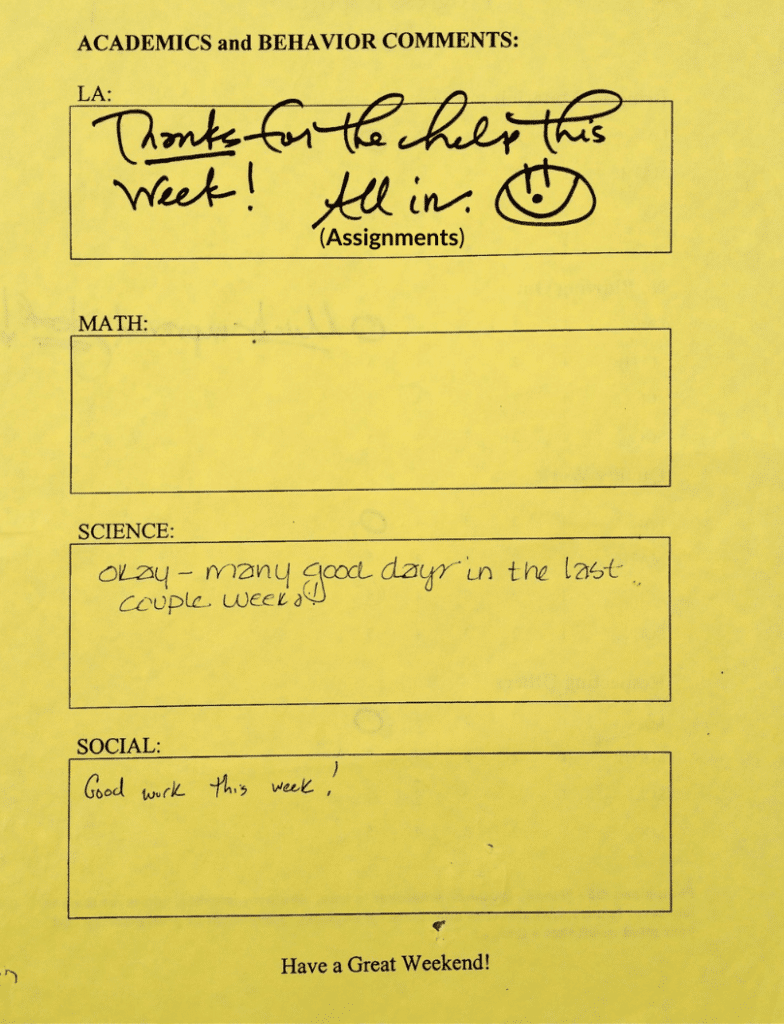
4 Inspired Ways To Foster Love & Responsibility in the Classroom

Most of the resources at Connected Families are geared toward parents – but not this one! We’ve gathered a collection of stories and ideas specifically for teachers. We are grateful for you! These are challenging times to be a teacher. Teachers often want to foster responsibility in the classroom, but they also likely want to foster love in the classroom (for each other AND for learning)!
Chances are that even if you’ve never heard of Connected Families, you would look at the four messages in the Connected Families Framework, and they would resonate with you as you work toward meaningful connection and growth for your students.
What is the Connected Families Framework?
At Connected Families, we believe that every child needs to hear the following messages from those who care for them:
- You are SAFE with me. (Foundation)
- You are LOVED no matter what. (Connect)
- You are CALLED and CAPABLE. (Coach)
- You are RESPONSIBLE for your actions. (Correct)

These messages form a framework for every interaction. We’ll take a more detailed walk through each level of this Framework. You’ll see how it has guided other teachers to integrate child development and brain function insights with biblical principles (when their setting allows).
Teachers, just like parents, have overwhelmingly good goals and intentions for the children in their care. Unfortunately, those goals and intentions aren’t always communicated in a way children can understand. Instead, kids may receive not-so-helpful, unintended messages, like “You’re a problem” or “You’re frustrating me.” These messages are often rooted in attempting to meet the needs of many students at one time or using ineffective, problem-focused behavioral systems. A disconnect between teachers’ good goals and the messages children get in the classroom often occurs because there just isn’t a plan (other than consequences) for misbehavior.
Even when rewards are included in a school’s behavioral plan, if I’m a child with anxiety and poor impulse control, I likely get the consequences day after day as I watch my well-behaved classmates get rewards. This can create a spiral of discouragement and shame, which may drive even more misbehavior. The Connected Families Framework can give you a framework (or plan) to lead your classroom with grace and intention, even in the midst of misbehavior.
Bonnie is a former special education teacher and has mentored other teachers in helping students with behavior challenges. She is now a Connected Families Certified Parent Coach, and says,
“Behavior challenges can be so difficult in the classroom every day. Many times I saw teachers’ stress levels just off the charts. The Framework is so freeing because you have a calm go-to plan that doesn’t include yelling. No one likes the feeling of being out of control. You already have a boatload of stress because you have to teach 25 children a lot of material in 9 months! You have lesson plans for the subjects you teach. How great would it be if you also had an intentional behavior plan to move through your day’s challenges with less stress or worry?”
Teaching today is not like teaching even ten years ago. There are increasing numbers of kids with all kinds of diagnoses and much more anxiety than ever. Kids come to the classroom with more than typical kid behavior challenges. There’s a lot of trauma, mental health issues, and effects of media that we didn’t have a generation ago. We’re hearing from teachers who are finding new ideas and effectiveness by looking through the lens of the Connected Families Framework.
When Bonnie took over a class of children with specific learning disabilities, she described it as “madness” and “out of control.” She stayed calm and emotionally safe, treating the kids with respect regardless of their behavior, and the class made significant gains. Halfway through the year, a child asked, “How come you never yell at us like the other teachers?” Bonnie replied, “I don’t need to yell at you. You guys are amazing!”
When you use the Connected Families Framework, you will spend much less time managing behavior!
-Maggie (teacher of 11 years)…to any teacher considering applying the Connected Families Framework in their classroom: DO IT. Your students will be happier, the challenging behaviors will decrease, and you will enjoy your job more.
What does using the Connected Families Framework in the classroom look like?
FOUNDATION: “You are SAFE with me.”
The term “Foundation” depicts that other elements of a healthy relationship (connect, coach, correct) are built on the essential starting place of relational safety. Why is that so important? Because: Kids learn best when they feel safe!
Self-awareness is the starting point for safety.
The underlying emotions and thoughts that could affect your verbal and non-verbal responses are endless. But they are powerful influences on how an interaction goes.
It can be a default for any caregiver to unintentionally, unknowingly respond to a child out of:
- resentment toward that child (“Here we go again…”)
- overwhelm from your immediate situation or stresses totally unrelated to school. (“Seriously? This is just too much today!”)
- anxiety about losing control of the class (“I’ve got to make this stop!”)
You may be unaware of the anxious or angry expression on your face that cues a child up for a fight/flight response. Kids are great observers but not always great interpreters of what they see. They notice and react to adults’ non-verbal cues, and if they don’t feel relationally safe, they can form conclusions like “You’re against me. You don’t like me.” Since research indicates that the pain of feeling rejected resembles physical pain, those conclusions can easily trigger a fight/flight reaction.
So as the teacher/caregiver, if you want a child to feel truly safe with you, you can start by asking yourself the question, “What’s going on in me?” That is a challenging but valuable question that gives you the self-awareness to avoid any non-verbals that could trigger a child into a fight/flight reaction.
When you recognize you’re bringing resentment, frustration, overwhelm, or anxiety into the interaction and heading toward “fight/flight” yourself, this is actually a valuable opportunity. Students can learn a lot when you “model out loud” self-awareness and self-regulation!
Like this…
- “I’m getting frustrated, so I’m going to take some deep breaths – that helps me stay calm and kind!”
- Depending on your school, you might say, “I breathe in God’s grace [inhale], and I breathe out God’s peace [exhale].”
- See this list for creative examples of calming breaths you could model (#3 is a kid favorite).
- If you’re frustrated with poor behavior from the class, you could lead the class in a Calm Connect activity (or similar video) to help all of you regulate.
- One teacher shared, “If I do start to get into the ‘yellow zone,’ I stop and tell my students I’m going to take a deep breath, or I sing some calming instructions for them to follow (they even started singing them back!).”
Why is students’ need to feel safe such a big issue in today’s classrooms? Often we assume that children feel safe. But for some children, safety might not be the norm. Other children have neurodiversity that results in an “overactive threat detector,” which means they are frequently anxious and easily triggered into fight/flight/freeze reactions.
Maggie tells the story of one of her young students whose need for safety became especially apparent:
“On his first day in my room, I tried to help him put on a paint smock, and he had an absolute meltdown. He was screaming, on the ground, under a table, flipping chairs, and kicking at me. It was one of the most abrupt and intense meltdowns I had ever seen. I moved the other students away and sat down near him but not directly facing him, taking slow deep breaths.
Minutes went by, and nothing seemed to help. He was continuously screaming and kicking. Eventually, I said, ‘I’m not going to hurt you, and he stopped. His whole body relaxed, and he was quiet. At that point, I wanted to cry. All I could think was, ‘You thought I would hurt you??’ I had (incorrectly) assumed that children would know adults are there to help and not hurt them. But that is simply not true for every child.”
Slow, Low, and Listen
A practical “Foundation” tool that communicates “You are SAFE with me” is to engage a child by doing “Slow, Low, and Listen.” Slow your approach, get out of any finger-pointing or intimidating postures, get low (down on their level), and then listen thoughtfully.
Bonnie has often experienced the effectiveness of Slow, Low, and Listen:
“I had just learned about Slow, Low, and Listen. I got a call in my office and headed to the 1st-grade classroom. The administrator stood in the hallway, trying to get the student to come to her office. The 1st grader had shut down the whole classroom. No work was happening. I can still picture it. Her hair was messy, and she was sitting on the floor in the middle of the classroom with her arms folded and legs crossed. The teacher couldn’t get her to budge, and neither could the administrator.
As I went in, I had Slow, Low, Listen in my head, so I sat on the floor beside her. I quietly empathized with her. ‘It seems you’re having a hard day. I’m sorry. That’s tough.’ And then I gently said, ‘Would you like to hold my hand?’ And hand in hand, we left the room. We went to the principal’s office. (We still had to go there.) I thought, ‘Wow. Empathy brings safety and connection.’ I’ve used that method hundreds of times to help overwhelmed kids… Slow, Low, Listen was my best friend.”
Practical ideas to communicate “You are SAFE with me”:
- Put up some reminders for yourself: “Go Slow, Get Low, and Listen” or “Kids learn best when they feel SAFE.”
- Create a cozy corner, a no-pressure spot to regroup that is always open and available to everyone (music player and headphones, pillows, books, emotion visuals, sensory fidgets). You can even model using it a few times to demonstrate that it really is a cool place!
- Smile, especially at the kids who struggle and are used to adults being frustrated with them. Your facial expression goes a long way in communicating value to a discouraged student.
- Have a plan in place for young students who are anxious to feel safe after drop-off. “A favorite spot in my classroom was a writing station where kids could make a card for their mom or dad right after drop-off; I invited students to bring their own stickers to share at the writing station.”
We have a podcast about this topic!
Check out Ep. 202 of the Connected Families Podcast, “Practical Classroom Management Strategies That Work” for more ideas to equip you that you can start using today!
CONNECT: “You are LOVED no matter what.”
This next element of the Framework, Connect, helps children feel valued just as they are – challenges and all. It builds on Foundation because when kids feel safe with you, they can trust that your affection and connection are sincere. This is especially true when they proactively experience connection not only when all is well, but in the tough times too.
Proactive connection
Maggie describes the power of proactive connection – enjoying her students and filling their “cup” with love:
“In a Connected Families classroom, the relationships, not the behaviors, are primary—both relationships between teacher and students, and the students with each other. Find any and every way to delight in your students and celebrate them. With some children, that will be easy to do, and with others, you will have to work harder to build trust and convince them that you care deeply for them. But I will say in every class, it’s often the ‘tougher’ kids I have a rich connection with BECAUSE of the energy and commitment that has gone into that relationship.”
A proactive connection could include encouraging words, playfully engaging, warm greetings, special handshakes, or finding more ways to laugh together. One teacher had a secret signal to her most challenging child – she would subtly touch her earlobe when she looked at him (think Carol Burnett’s private hello to her grandmother.) It was quite an encouragement to him because it communicated, “You are seen, you are enjoyed, and you belong!”
The power of empathy
A significant piece of communicating the message, “You are loved no matter what,” is empathy. It starts with thoughtful consideration of what Bonnie calls “the essential question:” “What’s going on in my students today?” It’s helpful to think about each of your students as having a ‘stress backpack.’ Underlying stresses can feel like rocks added to a metaphorical backpack kids carry all day. When a child has an outburst in math class, are they really being disrespectful to you, or are they just overwhelmed and DONE? It takes discernment. Is it the day’s last class, and have they been bumped and jostled all day?“
In “Willpower: Rediscovering the Greatest Human Strength,” Roy Baumeister, Ph.D., cites evidence that willpower is a limited resource that is vulnerable to being depleted with repeated demands. So whether the issue is depleted self-control, sensory overload, shame and discouragement, or any other “rock” in a child’s stress backpack, the discernment to really tune in to your students can help you respond from a place of empathy instead of frustration – connecting before you correct.
“Hannah” shared this with us. “I was challenged by the idea that the kids who were struggling are not ‘worse’ children than the others. Some children have less impact awareness. Some are more anxious about relationships. Some are less aware of what’s going on around them. I want to bring positive encouragement and feedback to each student, not just those whose positive qualities are more obvious. When writing comments for report cards, I was very aware of wanting to speak positively about each child, giving the message, ‘This child is loved and capable.’ I want every child to hear the message ‘You are a valued member of this class.’”
Practical ideas to communicate “You are LOVED no matter what”:
- Checking in with the class at the start helps kids feel right away like their feelings matter. This could be asking, “How’s everyone doing today?” or having each student write or draw “What I want you to know about me today.”
- Learning about your students’ lives outside of class is powerful. One middle schooler said, “I know my teacher cares about me because every Monday, she asks us about our highs and lows of the weekend.” What a simple, effective way to start the week with connection!
- Develop a habit of saying or singing a student’s name as a greeting or in connection with praise. This prevents you from using a student’s name primarily for correction.
- Connect before you redirect. If your school’s rules allow it, you can put your hand on a student’s shoulder to offer warmth and care before giving an instruction.
- Build a sense of belonging: “We have a bulletin board [with pictures of our preschool class] that says Teddy Bear Classroom Family [and I often say] ‘We are all part of this classroom family, and that means we are going to take care of each other.’”
- Add a wink when you make eye contact with a young student. They enjoy the challenge of trying to wink back. “I could quickly bring order to an early childhood class at circle time by offering to wink at each student who sat down quickly and quietly and letting them give a wink back.”
- Keep a checklist and make sure you give positive affirmation to every student. You can say things like, “I’m so glad you’re in our class,” or “I’m so glad I get to be your teacher.” You can do this with positive notes home to parents. Once you get through your class roster, start again.
Being thoughtful about children’s regulation needs during the day also communicates caring:
- If children enter the classroom in a silly or dysregulated mood, you can take the whole class on a walk around the playground in a ‘follow-the-leader’ style instead of trying to suppress the energy.
- Have a picture schedule at children’s eye level so they know what’s coming.
- Structure it with alternating active and quiet times because “motion changes emotion.”
- You can keep water bottles and snacks accessible, especially for students who have experienced trauma or food insecurity.
“Those two things alone- you are safe and loved- will take care of 80% of classroom behaviors you have to manage. When you create a culture of belonging and purpose for your classroom, children want to be there and want to contribute.”
-Maggie
We have a podcast about this topic!
Check out Episode 145 of the Connected Families Podcast, “Connect with Students: A Framework To Connect with and Nurture Responsibility with ALL Students,” to hear one teacher’s experience of integrating the Connected Families Framework in the Classroom.
COACH: “You are CALLED and CAPABLE.”
You know more than anyone the importance of recognizing and nurturing your students’ potential! The message “You are Called and Capable” is all about inspiring and empowering your students.
Set kids up to serve
A powerful way to communicate “You are Called and Capable” can be as simple as finding a way for them to serve. Decades ago, at a conference on at-risk youth, Lynne’s husband Jim heard Michael Resnick, Ph.D. state a powerful principle from research: “The secret to self-esteem is: Teach a child a skill and create an opportunity for them to use it in meaningful service of others.”
Sara is a former teacher, now on staff at Connected Families. She shares, “I remember being taught if a student was having a hard time following directions, that giving them a job often would help shift things for them. I had one student who would regularly tell me how he hated math. He would tell me that he thought I was fine as a teacher but hated class because he hated math. One day I hadn’t turned my projector on when class started, and he was tall (and I was not!), so I asked him to turn it on. He then took a lot of pride in turning it on and making it his job every day. It was a bright point for him, and over time, with a lot of academic support and affirmation, he ended up being my top student and feeling so proud at what he’d accomplished.”
Effective affirmation
The art of effective affirmation is a vital piece of the Called and Capable message because “Focus is Fertilizer!” Whatever it is you focus on, you will get more of. Click HERE for a FREE PDF of “Focus is Fertilizer” to download and print for easy reference.
This principle is powerfully illustrated by the change in the “behavior plan” sheets for my (Lynne’s) oldest son, Daniel. He was a super bright, quirky, impulsive, ADHD kiddo with a very tender heart that needed the right environment to flourish, and even with teachers’ good intentions, our local middle school wasn’t doing it for him.
We met with his team as they identified behaviors of concern. I volunteered to develop a weekly “Progress Report” system for teachers to sign and let us know how the week had gone. The comments were increasingly negative as he got more discouraged about their feedback, and his behavior worsened with that discouragement.
The Friday he brought home the sheet below, he was so frustrated at all the negative comments that he crumpled it and threw it across the room, “I hate these things!” (Note the comments in dark blue.)


That weekend I blew it with him and was critical of what he’d done wrong, ignoring something really sweet that he’d done. I asked his forgiveness and told him I really wanted to put my focus more on what he was doing well. I shared Philippians 4:8, ending with, “…if there is any excellence, and if anything worthy of praise, dwell on these things.” He burst out, “I love that verse!! Can we tell my teachers about that verse?!” So we did. I added it to the bottom of his sheet, and we told his teachers, “Call us if there are any major problems; otherwise, focus on what he does well and write about that.”
Daniel’s attitude and behavior profoundly shifted as he began to believe that his teachers were for him, not against him, and were working to find and encourage the good things in his heart and actions. He began to thrive at school and was so much more respectful at home as well. Look at the change in teachers’ comments in just two weeks:


These were all caring teachers who wanted to help our struggling son and probably thought that pointing out what was poor behavior was the quickest way for him to fix that behavior. They likely learned a lot about the power of encouragement and affirmation through this experience.
It’s human nature that selfish, sinful choices almost always happen when we are deeply discouraged, frustrated, stressed, or anxious. The power of the message, “I truly care about you, want to help you, and I’m looking for the good in you,” is profound. It decreases a child’s vulnerability to making poor choices.
“Therefore encourage one another and build each other up, just as, in fact, you are doing.” 1 Thessalonians 5:11 (Notice that the apostle Paul ends this command to encourage, with encouragement!)
We’ve got a simple tool called the ABCs of Affirmation to help you effectively develop capability in your students by naming the positive Action, pointing out the Benefit to themselves and others, and identifying the Character or positive identity they are growing in.
For example, “Wow! [Action] You saw your friend spill her water, and you went and got her a paper towel before she asked. [Benefit] That really helped her feel cared about! You’re becoming a [Character] problem-solver and a good friend.” It is important both for students who struggle and their classmates to hear their gifts and strengths named out loud. Click HERE for a FREE PDF of the ABCs of Affirmation to download and print for easy reference.
Affirm a “Gift-Gone-Awry”
At Connected Families, we believe that we can find and build strengths, even in misbehavior. When kids have a goal to get something or get out of something, they tend to tap into their strengths, not their weaknesses, to achieve their goal. So usually, underneath misbehavior is a God-given gift that goes awry and can be shaped into a gift on track, used for honoring purposes.
A student who argues might have gifts of communication, confidence, or honesty. Lying could be fed by creativity and a desire to keep the peace. The student who interrupts with challenging questions and ideas might have a latent gift of leadership. An important question is: How might you acknowledge and channel a student’s gift toward better purposes?
“The gift-gone-awry is a tool I have shared with every parent of the students I’ve had over the last two years. I love it SO much. And I use it the same way in my classroom as I do at home. ‘God has given you a gift of _______. That is a good thing! And He gave you that gift so you could use it to bless others and bring glory to God. Let’s try to manage that gift well.’ I will also try to publicly address students’ gifts in front of the class, especially students who often have their behavior corrected.” – Maggie
Create a “Just Right Challenge”
Another concept in bringing out the capability in children is creating a “just right challenge” by scaffolding lagging skills and allowing students to practice, succeed, and build on that growth. Research shows that learning is optimized when a person succeeds about 85% of the time.
A student in Sherry’s class struggled with singing or speaking in front of others. “When we would stand to sing, he would remain seated. However, he was comfortable standing with the group to play a game like Simon Says and would remain standing for what came next. So, before we stood to sing, I started with a different activity that required standing so he could participate in a way that he was capable of. By the end of the year, he joined in the singing, too!”
Research shows that learning is optimized when a person succeeds about 85% of the time.
Practical ideas to communicate “You are CALLED and CAPABLE”:
- Instead of telling: “Sit down and raise your hand!” asking builds capability: “What do you need to do if you need help?”
- Another example: “What do you know about being kind when we line up?”
- A question as simple as “How can we solve this?” can help kids develop a mutually agreeable solution. When children find it hard to keep the classroom rules, they can problem-solve with the teacher to find a solution.
- Having rotating classroom jobs can help each child feel valued and capable.
- Remind students of everything that was hard for them that they can now do with no problem after working hard all year!
- Role-play challenging situations with students to practice skills and help them think through a plan.
CORRECT: “You are RESPONSIBLE for your actions.”
Giving a child a consequence for misbehavior may feel good in the moment; you feel back in control, and “justice has been served.” But does it equip children for next time? Or does it inadvertently communicate that you are responsible for managing their behavior?
An important principle of the Connected Families Framework is that “Effective discipline puts responsibility on kids to right their wrongs.” The goal of this shift away from punishment as a default is to facilitate restoration. Galatians 6:1 says, “…if someone is caught in a sin, you who live by the Spirit should restore that person gently.” The word in the original language is also used for mending a broken bone. That’s an inspiring image to think of – drawing kids toward the beauty of healed relationships.
Promoting responsibility and accountability is a fundamental aspect of teaching and will make your job more manageable over time as your students learn to correct themselves. The message “You are Responsible for your actions” teaches students the value of taking ownership and making it right when they get off track.
When thoughtful, wisdom-building discipline is in place, teachers can move away from refereeing conflict and toward facilitating students’ growing responsibility and skills.
Do-overs are better than “What should you do next time?”
Do-overs are an excellent way for students to practice what they’d like to do differently next time. This shows their commitment to growth, which is a way to “make it right” when they’ve “made it wrong.” It gives them a full-body sensory-motor experience of a helpful choice instead of just saying what they could do next time. Madi is a preschool administrator who tells us that in her school, you’ll hear do-overs happening all the time by administrators, teachers, students, and their parents!
You can model a do-over in your class when you’ve responded in a “less than best” way to your students: “Hmm, I didn’t like how I said that. I’m going to take a deep breath and try that again.” (Maybe even back up and enter again. 😉 Respond how you wish you had, then finish with an important step: smile and self-affirm with something like, “That felt better. Did that feel better to all of you?”
So the next time you are impatient or overly stern with your class, consider it a valuable opportunity to model how to make things right quickly when you’ve blown it. When you do, you can show that reconciliation can be a shame-reliever instead of a shame-inducer! Depending on your environment, you may even share about God’s grace that freely offers forgiveness and helps us live in unity and love.
“The Peace Process”: Teach valuable conflict resolution skills
The Peace Process is a practical Connected Families tool with four steps: Calm, Understand, Solve, and Celebrate. It can help you facilitate kids’ conflict resolution and teach them how to do that independently.
Carrie shared the surprising result when she facilitated conflict resolution between two students:
“I stopped by my co-teacher’s classroom and found Manuel and Ellie eating lunch in the classroom at separate tables as a consequence of hitting each other.
CALM: In a relaxed way, I asked them what had happened. They both wanted to blame each other, but I gently asked them to take responsibility for their own behavior. ‘No, you can’t tell me what the other person did. Please tell me what you did.’
UNDERSTAND: The kids were honest about what they’d done, which helped them step into the other person’s shoes. Then I said, ‘Hmm, was that very kind or respectful?’ and they said, ‘No.’ [Note: The Understand step can also involve each child sharing their feelings and listening to each other until they both feel heard.]
SOLVE: ‘What are some things that you could do to be kind and respectful to each other?’ They started to talk about playing together. Ellie was having a birthday party soon, so Manuel said, ‘I’m gonna go to her birthday party, and I’m going to wish her a happy birthday!’ Then they started talking about a lot of different ways they could be kind and respectful.
‘Ok, do you feel safe around each other now?’
‘Yeah, we feel safe around each other.’
‘Do you feel like you need to say anything more to each other?’
They both wanted to apologize to the other person.
CELEBRATE: We finished by talking about specific things they could do the rest of the day to be kind and respectful, and I encouraged them about what a great job they had done resolving their conflict.
At the end of the day, the classroom teacher called me and said, ‘I have no idea what you said to those two, but they were like best friends the rest of the day.’ Now when they have problems with each other, the teacher just says to them, ‘You guys talk about it and figure it out. Let me know if you need help.’ They usually just resolve it on their own.”
Destiny, a physical education teacher, shared, “One of the biggest challenges I face in PE is managing kids’ interactions with others. I realized quickly, with my class size, that I couldn’t arbitrate every situation. I began to coach students to see if they could resolve problems with others and be responsible for their actions.
I love the Connected Families Peace Process, so I printed out an illustrated step-by-step graphic and began to teach it to my students. We have a designated table with a Peace Process poster. When students have a conflict with another student, they have a place to resolve it. I am available to guide them through the steps, but the kids’ resolutions have blown me away.
Once, a student came to me crying because a group of his classmates thought he was not good enough to be on their team. I asked him if he wanted to ask the other boys to do the Peace Process with him. We gathered the group of boys and did the steps. The boys didn’t realize that their unkind words had hurt their friend. They apologized and ended with high fives! It was so sweet to see the student who felt he’d been wronged take responsibility, seek out the friends who had hurt his feelings, and then see the boys who had done the wrong take responsibility and apologize.”
Click HERE for a FREE PDF of the Peace Process to download and print for easy reference.
Practical ideas to communicate “You are RESPONSIBLE”:
- Use literature to discuss how story characters do or don’t “make things right.” What’s the result? (Kevin Henke’s Lilly and the Purple Plastic Purse is a favorite for younger children that speaks directly to making things right with your teacher.)
- Offer your student a “Do-Over” and model do-overs yourself!
- When students have ignored or refused to follow directions, ask them to draw a picture or write a note explaining what they’ll do next time and give it to the adult. Encourage them for having a good idea and, if possible, have them practice that idea.
- With a younger child who has hurt someone and feels ashamed, try verbal modeling – for example, “You can ask him [or her], ‘Are you okay?’” With older kids, ask questions like “How could we solve this or make it right”? Or, “What’s a solution that would help everyone feel cared about?”
- Establish a special spot in the classroom for “make it right” conversations with friends. (In Sherry’s classroom, it was simply under the paper towel dispenser! Kids knew this was the place to go to apologize and reconnect with kindness.)
– Maggie“One of the biggest things to remember is that kids generally believe what their teachers say. If you are careless in what you say to a child or what you don’t say to them, they remember and internalize that. If you are telling them the truth – that they are safe and loved and called and capable and responsible, they will believe that, too.”
I (Lydia) have had the pleasure of coaching several families where at least one of the parents was a teacher. I’ve seen how excited teachers get as they recognize that the Connected Families Framework pulls together much of what they know from brain science, child development, and experience – as well as the Bible. One mom became a huge advocate for Connected Families at the school where she teaches. It gave her the practical tools to take her true priorities and goals and bring them into the day-to-day classroom experience. The desire to send the Four Messages was already in her heart for her own kids and her students, but the framework put it within reach and brought simplicity of purpose.
Bonnie reminds us, “You’ll have hard days; of course you will. But it’s not about making your classroom perfect! You don’t have to dread those hard days because you know you can go slow, low, and listen, ask curious questions when a child struggles, and facilitate a do-over. ‘I can breathe; I have a plan.’”
You can have confidence that you’re planting seeds that will have a significant impact over time. Regarding students, other teachers, or parents, Bonnie says, “I modeled it more than I preached it.”
Madi has her entire staff trained in using the Connected Families Framework. She believes that with this teaching, “We’re going to see a generation rise up that’s not only biblically-based, but they’re socially and emotionally ready to make a significant contribution in the world!” She also shares it with as many parents as possible and has noted a drastic improvement in students’ social and emotional development when parents and teachers started using the Framework. “Teachers are using it, parents are using it – I don’t know what we did without it!” Her staff has a card with the framework on their badge lanyards, and they refer to it often.
This is not about trying harder; it’s about trying a different way, a way we hope will be freeing and empowering for everyone involved. Madi has seen how the Framework can change the trajectory of families’ lives. We’d love to see the Connected Families Framework become a go-to for teachers and parents, a way to get on the same page and work together!
Downloadable PDFs for you to print/use
Throughout this article, we have mentioned several key concepts for you to bring more peace and connection to your classroom. These are all available as FREE PDFs for you to download and use in your classroom as resources and gentle reminders.
Acknowledgments
Connected Families would like to sincerely thank the educators and parent coaches who contributed to this post. Their insight into utilizing the Connected Families Framework in the classroom was invaluable for putting this piece together. If you’d like more information about any of these contributors, you can check out their websites listed below:
- Destiny Legare https://theconnectionschool.org/
- Bonnie Williams https://newpathwaysfamilycoaching.wordpress.com/
- Pam Thompson https://cordsofhopecoaching.com/
- Madi McCloskey www.kiddieprepschool.org
- Maggie Rocke North Heights Preschool
- Sara Paine https://connectedfamilies.org/sara-paine/
- Sherry Fiscella https://www.sherryfiscella.com/
Ready to dive in and learn more about the Framework?
Our 8-session online course, Discipline That Connects With Your Child’s Heart will guide you through each level of the Framework. If you’re looking for a grace-filled way to parent, this course is for you!




